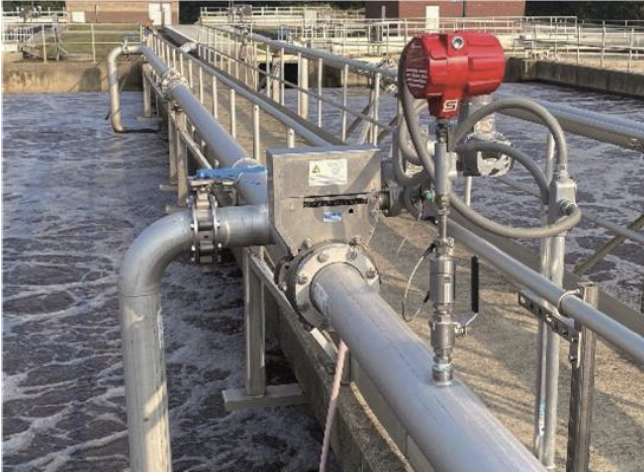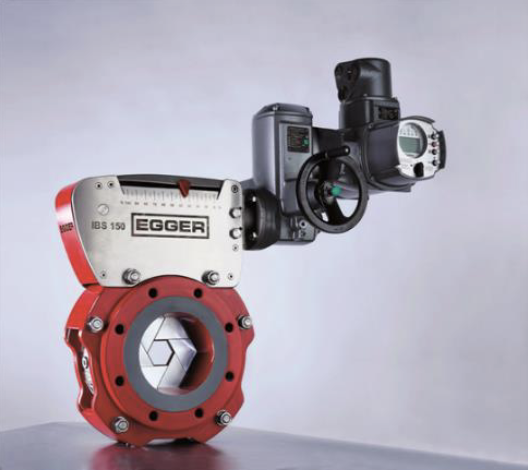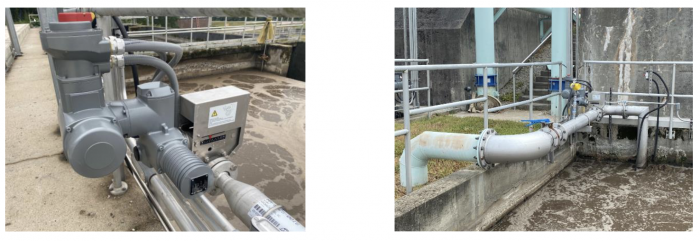Egger stand at IFAT Munich 30 May to 3 June 2022, Hall B1 / 345

Photo by Emile Egger & Cie SA
Eggers would be pleased to welcome you at the next IFAT from 30 May to 3 June 2022 at the exhibition stand at the Munich trade fair.
The unique Turo® vortex pump with the TA impeller specially developed for raw sewage pumping has been a reference for decades for the low-clogging pumping of sewage. As the inventor of the vortex impeller, Egger has consistently optimised these special hydraulic properties to this day. Eggers will also present the 4-year maintenance-free and 100 % dry-running safe Turo® vortex pump with the TA impeller specially developed for raw sewage pumping.
Among other things, Eggers will present the latest generation of the Iris® orifice plate control valve IBS, proven for years as a high-precision energy-saving valve in industry and wastewater technology for the economical and low-noise control of liquid and gaseous media. The segments that can be retracted into the housing allow free passage when the valve is completely open and guarantee low pressure losses as well as a high energy-saving potential. Ideal for precise control of activated air.
Precise and reproducible flow control with Iris® orifice control valves
In wastewater treatment plants with activated sludge processes, up to 60 % of the total energy requirement is needed for air oxygen input into the aeration basins. Here, there is a high potential for energy saving and process optimisation in many plants.
The Iris® orifice plate control valve, which has been a reference for precise and reproducible flow control for more than 60 years, has proven itself as a control valve on hundreds of wastewater treatment plants over the past decades, where it is primarily used for economical air volume input into the aeration basins. In 1958, the Iris® orifice plate valve was developed by the company founder Emile Egger and introduced to the market, where it was mainly used for pulp control in paper mills. At the beginning of the 80s
Since then, Iris® gate valves have been used primarily in aeration basins at wastewater treatment plants. Due to its unique design, air volumes can be controlled precisely and reproducibly. This means that the biological processes can be operated in a stable manner and oxygen input values can be set extremely low and precisely maintained. This results in high energy efficiency and great stability for the entire activated sludge process.
Egger’s drive is to make the tried and tested better and better. Thanks to systematic further development, Egger is proud to launch a completely redesigned and technically revised Iris® orifice plate control valve IBS.

Photo by Emile Egger & Cie SA
The IBS
At first glance, the modern industrial design and its compact construction with shorter installation lengths catch the eye. For the system operator, it is advantageous to know in which position a control valve is located.
control valve is in. For this reason, the visual position indicator has been completely redesigned and is clearly visible from three sides from a great distance, in addition to the electronic position feedback of the of the modulating actuator to the control room.
The polyvalent IBS series can be used as an all-rounder in many industrial applications; its gas-tight design without spindle feed-through opens up many new application possibilities for the control of chemical and industrial gases. Furthermore, the gate valve is prepared for monitoring systems and can be pressurised and equipped with gas or liquid flushing. Leakage monitoring and flushing can be fitted without modifying the design.
But with its robust design and self-cleaning segments, the fitting is also a reliable control instrument for raw sewage or sludge. Thus, Iris® orifice plate control valves are available for the control of raw sewage, process water, primary and activated sludge or also for the
centrifuge feed with digested sludge.
The three locking and flushing connections of the IBS are offset at 90° and also serve as drainage and condensate drainage, which is a great advantage for systems that are periodically taken out of operation. The self-lubricating stem nut design of the IBS allows for maintenance-free and cost-effective operation, which simplifies the use of the slide valve in places that are difficult to access. Another advantage for the operator is the replacement of the actuator support or parts thereof without having to remove the valve from the pipeline.
from the pipeline. Iris® orifice control valves provide stable and reproducible control of media over the entire stroke of the valve. the entire stroke of the valve. For gases and activated air, the gate valves are designed so that the volume to be controlled can be operated in a range of high control quality without hysteresis. Due to its unique design with six centrally opening segments, which can be completely retracted into the housing, the valve The unique design of the Iris® gate valve with six centrally opening segments, which can be completely retracted into the housing, results in an equal-percentage valve characteristic. This results in an almost linear operating characteristic with a large control range, which enables the operation of economical control loops. operation of economical control loops.
Positioning accuracy under real conditions
Iris® orifice control valves were developed for the economical and low-noise control of liquid and gaseous media. and gaseous media. Segments that can be retracted into the housing allow a free passage with the valve completely open, guaranteeing low pressure losses and high energy-saving potential.
The following large-scale field tests prove their effectiveness and accuracy. At the Brightwater wastewater treatment plant, in King County, Washington State, northeast of Seattle, twelve Iris® orifice plate regulating gates are in use for activated sludge air control. Nine gate valves of size DN 200 control maximum flows of up to 6500 Nm3/h (4000 SCFM), the three smaller Egger control valves of size DN 150 control flows of up to 2400 Nm3/h (1500 SCFM). All Iris® control valves were supplied as a kit with inlet and outlet sections and have a precise mass flow measuring system, which is located centrally in the flow axis in front of the valve. In a large-scale field trial, the repeatability of the aeration air flow rate control achieved with the orifice control gate valve was tested by the plant operator in the presence of the planning engineering firm Brown & Caldwell from Seattle.
In different basin zones, the air volumes to be controlled were measured in each case at three different opening degrees of the valve, and after a short period of time, the valve was returned to the same position. The results were convincing because the measured quantities only showed a minimal quantity deviation of less than one percent. At the Richmond and Fishers wastewater treatment plants, position accuracy tests were also carried out with very high precision.

Photo by Emile Egger & Cie SA
High control accuracies and reproducibility
The robust drive support with a spindle mounted on both sides enables very precise positioning of the control segments. The drive spindle was dimensioned for control operation at high switching frequencies. Due to its many threads with low pitch, the maintenance-free spindle enables a particularly high and reproducibility due to its many threads with a low pitch. A result of 99.3 % accuracy that Eggers can be proud of!
For more information, please visit: http://news.eggerpumps.com/
News Categories
- » NEWS HOME
- » Automation & Robotics
- » Industry 4.0
- » Material Handling
- » Sensors
- » Quality & Testing
- » Machine Vision
- » Laser & Optics
- » Metalworking
- » Motion Control & Drives
- » Hydraulics & Pneumatics
- » Process Industry
- » Renewable Energy
- » Agriculture
- » Home & Office Furniture
- » Environmental Tech









